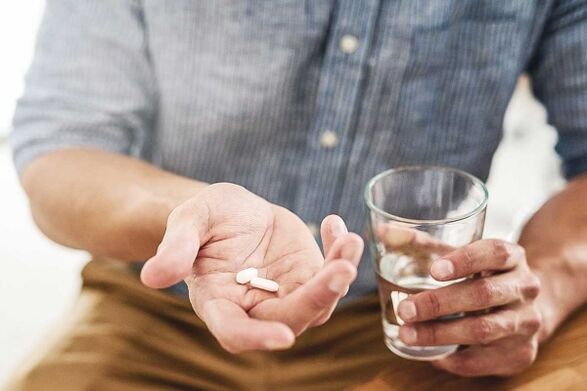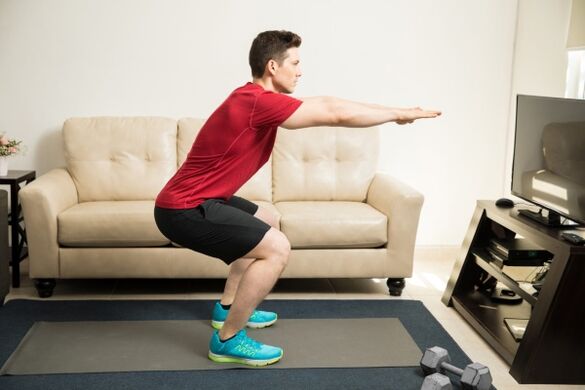Calcular prostatitis is a rare form of the disease that requires specific treatment. Therefore, it is important to know how it is created and what signs are accompanied by it. This article will tell you more about all the characteristics of the disease. As well as methods of diagnosis and treatment.
Calcular prostatitis is characterized by an inflammatory process in which conglomerates of a dense structure are formed. In other words, these are stones that are in the prostate. They are made up of elements that penetrate into a person's body. They arise in the secretion of the prostate against the background of the chronic course of prostatitis, pathological disorders.
Causes of occurrence
Calculi prostatitis can be caused by:
- Infection of the genitourinary system. These can be diseases such as chlamydia, gonorrhea, trichomoniasis, ureaplasmosis, etc. In the process of reproduction and activation of pathological microorganisms, an obstruction is found in the ducts of the prostate, against the background of which the secret takes on a thick and viscous structure. In this way, bacteria create a favorable environment for the formation of stones and prostatolites contribute to an increase in inflammatory processes, which leads to congestion in the prostate.
- Stagnation of all processes in the gland, which occurs for various reasons - the presence of adenomas (benign tumor) in the prostate, inactivity, influence of harmful food, alcohol abuse, tobacco smoking. But most often the reason lies in the lack of regular sexual activity, since in this case the glands are usually unable to empty the stones, and therefore stagnation occurs.
- Urethro-prostatic reflux. In this disease, urine fluid is thrown into the prostate in small doses when urinating. As urine builds up, crystallized salts are released which over time increase and thicken and develop into stones. Urethro-prostatic reflux develops due to injuries to the urethra, atony of the prostate, resection of the prostate gland, etc.
- A disturbed blood flow to the pelvic organs also leads to stagnation.
- Frequent hypothermia of the body and genitals.
- Failure to observe personal hygiene leads to infection, which leads to calculous prostatitis.
- Older age. This is because a type of plaque made up of phosphoric acid and lime forms on the thickened epithelium and amyloid bodies.
The rock formations are yellowish and spherical. The minimum size of the prostatolites is 0. 25 cm, the maximum 0. 4. They are formed individually or in groups, they are mainly of the following types: phosphate stones, oxalate or urate stones.
Symptoms
The following signs indicate the presence of prostatolites in the prostate:
- dull and aching pain in the perineum, groin, tailbone, scrotum;
- increased pain syndrome after physical impact, bowel movements, sexual intercourse, prolonged sitting in one position;
- sharp pain when urinating;
- intermittent beam;
- frequent urge with urine retention;
- Blood particles in urine and semen;
- premature ejaculation;
- Weakening of potency;
- increased body temperature;
- Insomnia;
- decreased appetite;
- psycho-emotional instability.
Stages of bacterial prostatitis
- Primary or catarrhal.In the primary form, stones form in the acini of the prostate or ducts. Symptoms of a catarrhal type are poorly expressed, symptoms resemble catarrhal pathologies. If you consult a urologist in a timely manner and begin appropriate treatment, you can get rid of the disease in a week.
- Secondary or follicular.In the secondary form, prostatolites penetrate the organ against the background of urolithiasis from the kidneys, bladder and other elements of the body. A follicular appearance may develop after an untreated catarrhal type. The manifestations are acute, with an increase in body temperature and suppuration, the duration of therapy is long.
- Tertiary or parenchyma.In the tertiary form, the parenchyma of the prostate is affected, so it is called the parenchyma (diffuse). It is the last stage of the acute course when the symptoms are very acute. A purulent exudate forms in the inflamed area. The treatment process is long, tolerability is difficult.
Possible complications of calculous prostatitis
What complicates untreated calculous prostatitis:
- Abscesses in the prostate against the background of the accumulation of purulent fluid in the tissues;
- Poisoning of the body with purulent formations and the further development of sepsis, which is fatal;
- atrophy of the prostate and, as a result, impotence;
- Vesiculitis in acute or chronic form, which is characterized by vasodilation in the spermatic cord, which leads to impotence and infertility;
- Cystitis and urinary incontinence.
To avoid such consequences, it is necessary to go to the clinic at the first signs and undergo a full examination.
How can you alleviate an attack at home?
It is understandable to any sane person that it is necessary to call an ambulance brigade during an attack. But before she arrives, you can take the usual pain medication. If your medicine cabinet contains propolis-based rectal suppositories, follow the appropriate procedure. Relieves pain and pills.
Which doctor treats?
The urologist (or andrologist) deals with the treatment of prostatitis of any form. Other highly specialized doctors - a nephrologist, an infectious disease specialist, and others, depending on the cause of the stone formation - are also involved in the process of diagnosing and choosing treatment tactics.
diagnosis
At the first visit to the urological practice, the doctor performs a palpation and visual examination, after which he collects an anamnesis. Lifestyle, the presence of certain pathologies and the nature of the signs that manifest themselves are necessarily taken into account. The following diagnoses are also carried out:
- Blood and urine collection for general analysis for the quantitative determination of structural units (composition of biological fluids);
- Semen collection (semen with calculatory prostatitis is characterized by an increased number of epithelial tissues and amyloid bodies);
- Sperm analysis allows you to examine the degree of motility and sperm count.
- X-ray of the prostate;
- Ultrasound examination of the prostate;
- Computed or magnetic resonance imaging.
A blood sample for PSA is mandatory, which can identify a specific prostate antigen (a type of tumor marker of the prostate).
Treatment of calculous prostatitis
The duration of therapy and the choice of therapeutic measures depends on the degree of neglect of the disease, as well as on the form, cause of its development and the presence of complications.
Medication
- Fluoroquinolone group used to destroy pathogenic microbes, which are most often the cause of prostatitis. These are antibiotics that can easily deal with many pathogens.
- Penicillin group of antibacterial agents.
- Tetracyclines group of antibiotics. However, tetracyclines have a wide variety of side effects and are therefore prescribed less often than other groups.
- Cephalosporins are given intramuscularly.
- Nonsteroidal anti-inflammatory drugs relieve pain syndrome, eliminate inflammation.
- The patient should take vitamin complexes to strengthen the immune system.

Surgical intervention
- Transurethral electroresection allows you to remove stones and cauterize blood vessels. This is done using a high-frequency electrical current and a resectoscope, which is inserted through the urethral lumen. The operation is painless, but there is a chance that prostatolite particles may be left behind.
- Transurethral surgery with ultrasound guidance. Unlike the previous method. Thanks to the increased ultrasound tracking, all stones are removed.
- Strip prostatectomy (stones are removed by dissection) and endoscopic (using an endoscope inserted into the prostate). In addition to stones in neglected form, resection of the prostate, lymph nodes and seminal vesicles is performed.
- Lithotripsy uses a laser to crush the stones, after which they are naturally eliminated. An endoscope is used for this.
physical therapy
- exposure to ultrasound reduces the level of inflammation, eliminates pain;
- Laser therapy accelerates metabolic processes in the prostate, relieves discomfort;
- Magnetic therapy restores blood circulation, neutralizes swelling.
Massage normalizes the patency of the channels, accelerates the blood supply, which is considered effective in prostatitis, but with calculative form it is strictly forbidden. The reason for this is that prostatolites can move through the body.
If you do not have the opportunity to participate in physiotherapy procedures, you can do them at home using special equipment. But remember that physiotherapy is effective only in remission - if prostatitis is in a stage of exacerbation, the use of equipment is forbidden.
Diet therapy
A patient diagnosed with calculous prostatitis is required to follow a special diet developed by a nutritionist at an individual level based on the severity of the pathology.
Dietary nutrition is based on avoiding alcoholic and carbonated drinks, fried, smoked, salty and spicy foods. It is undesirable to use broths based on fatty meat and fish, mushrooms. Horseradish, radish, radish, garlic, cabbage, beans and onions must be excluded from the vegetables. And the rest of the products lead to gas formation.
physical therapy
It is always used for prostatitis, but with a calculous form, the exercises should be light to prevent the movement of stones. Gymnastics should stretch the muscles of the perineum. To do this, you can do the following exercises at a slow pace:
- Stand on a chair with your hands behind your back. Take one leg to the side and raise it as far as you can. Lower the limb. The same actions are performed with the other leg. The number of approaches is 8-10.
- Stand with your back to the chair and lean in. Alternately, raise your legs toward your stomach and bend them at the knees.
- Spread your legs wider than your shoulders, sit down, and fix the position for a few seconds. Stand up. Try to make bouncy squatting motions during the exercise. Do not repeat more than 5 times.

Home remedies
- Eat 25-30 pumpkin seeds a day, raw and always on an empty stomach.
- Herbal decoction. You will need a bare ostudnik and a black letter in equal parts. Separate 1 tbsp. l. Herbs, pour 0. 5 liters of "cool" boiling water, let it brew. Take 100 mg 3 times a day half an hour before meals.
- Brew the root of the brown rose hips according to the recipe indicated on the pharmacy package. Drink as a tea drink three times a day.
- Put 2 tbsp in a glass of boiling water. l. Parsley seeds and simmer over low heat for 10-15 minutes. Hour. Drink a tablespoon up to 6 times a day.
- Drink 600-1000 ml of freshly squeezed asparagus juice daily.
- Other natural juices are also useful - carrots, beetroot, cucumber.
forecast
In the treatment of calculous prostatitis, conservative therapy is used first, the result of which is usually favorable. With neglected forms and in the absence of positive dynamics of drug therapy, surgery is used. In this case, too, the prognosis is favorable. However, special attention should be paid to the rehabilitation phase to prevent infection and other complications.
Preventive measures
To prevent the development of calculous prostatitis and prevent relapse, follow simple rules:
- eliminate bad habits;
- seek medical help in good time in the event of pathological disorders;
- strictly follow the instructions of the urologist;
- do not overcool;
- use condoms to avoid infection;
- have an active sex life with a partner.


























